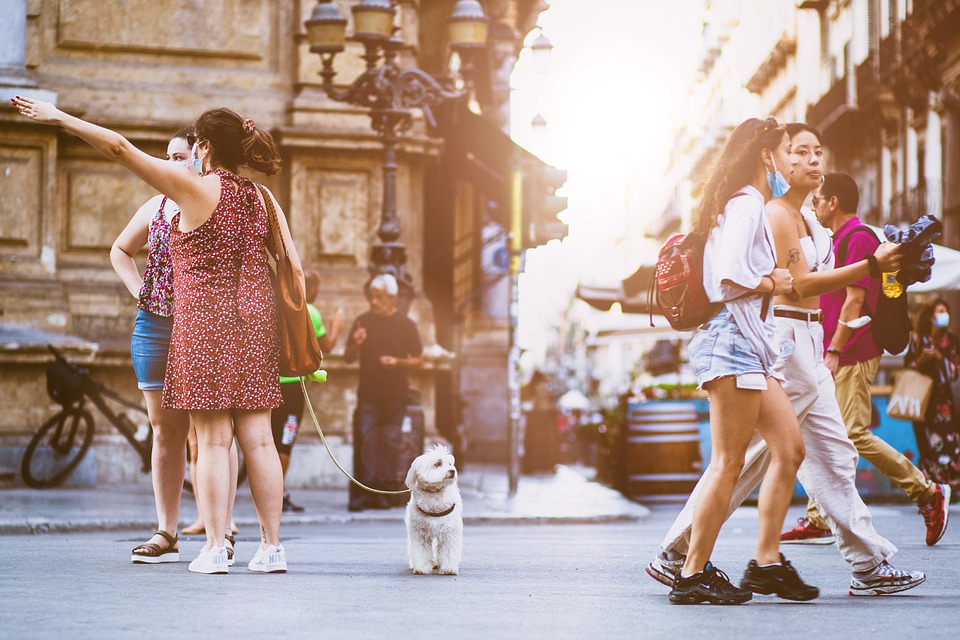High-energy dogs can be a handful, but with the right training techniques and understanding of their needs, they can become well-behaved and happy companions. In this article, we explored some effective tips and tricks for training high-energy dogs.
Firstly, it’s important to understand the characteristics and needs of high-energy dogs. Breeds like Border Collies, Australian Shepherds, and Jack Russell Terriers are known for their innate energy levels. These dogs thrive on physical and mental stimulation, and if their needs are not met, they may develop destructive behaviors or become anxious.
Creating a structured routine is crucial for high-energy dogs. Establishing a consistent schedule for meals, walks, playtime, and training sessions helps them understand boundaries and expectations. Incorporate mental stimulation activities, such as puzzle toys or obedience training, to engage their busy minds. A tired dog is a well-behaved dog, so make sure to provide ample physical exercise to drain their energy.
Regular exercise is vital for high-energy dogs to prevent boredom and restlessness. Aim for at least one to two hours of vigorous exercise every day, depending on your dog’s breed and age. Engage in activities like running, hiking, fetch, or agility training to keep them physically and mentally stimulated. Consider joining dog sports clubs or enrolling in obedience classes, as these can provide structured outlets for your dog’s energy.
High-energy dogs respond best to positive reinforcement training methods. Reward-based training techniques, such as clicker training or using treats, help motivate them and reinforce desired behaviors. Break down training sessions into short, focused intervals to maintain their attention span. Be patient, consistent, and provide plenty of praise and rewards when they exhibit the desired behavior.
Teaching impulse control is another important aspect of training high-energy dogs. They are often prone to impulsive behaviors like jumping, pulling on the leash, or excessive barking. Teaching your dog self-control exercises, such as “sit-stay” or “leave it,” helps them learn to calm themselves and make better choices. Practice these exercises in various environments and gradually increase distractions to reinforce their impulse control skills.
Socialization is crucial for high-energy dogs to help them develop appropriate behavior around both humans and other animals. Expose your dog to various environments, people, and dogs from a young age. Enroll in obedience classes to teach them basic commands and proper leash manners. A well-socialized and obedient dog is more likely to enjoy interactions and outings without exhibiting excessive energy or anxiety.
If you’re struggling with your high-energy dog’s easily distracted behavior during training sessions, keep the sessions short and engaging. Use high-value treats or toys as rewards, and gradually increase the difficulty level as their focus improves. Find a quiet, low-distraction area for training and gradually introduce distractions as your dog progresses.
Excessive barking can be a sign of pent-up energy or boredom. Ensure your dog receives sufficient physical and mental exercise throughout the day. Teach the “quiet” command using positive reinforcement, rewarding them for calm behavior. Consider using puzzle toys or food-dispensing toys to keep them occupied and mentally stimulated.
While each dog is unique, certain training tools can aid in training high-energy dogs. A sturdy, comfortable harness can provide better control during walks, especially for dogs prone to pulling. Long training leads or retractable leashes can be useful for practicing recall commands in open spaces. Puzzle toys and treat-dispensing toys can also keep their minds engaged.
Training a high-energy dog requires dedication and understanding. By providing them with a structured routine, ample exercise, positive reinforcement, and proper socialization, you can help your energetic pup become a well-behaved and happy companion. Remember, a tired dog is a happy dog, so embrace their energy and use it to create a strong bond and a fulfilling relationship.









